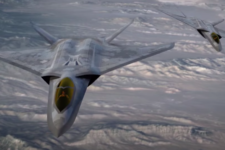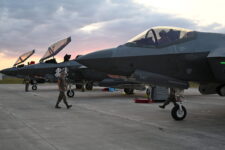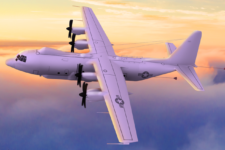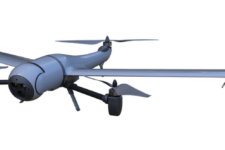
The Under Secretary of the Army, Gabe Camarillo, visits soldiers assigned to 2nd Cavalry Regiment during exercise Dragoon Ready 23 in Hohenfels, Germany on Feb. 1, 2023.
(US Army/Staff Sgt. Ashley Low)
AUSA 2024 — When members of the Army Requirement Oversight Council (AROC) get together, it’s typically to greenlight new weapon requirements and pave the acquisition path ahead. However, now the advisory council has a new, emerging task: stripping away old, outdated plans.
“Nothing should ever be 100 percent [set] in stone, and we should be able to pivot,” Army Under Secretary Gabe Camarillo told Breaking Defense ahead of the annual Association of the US Army conference in Washington, DC this week.
“We know how to start new programs very, very well, but we have to also learn how to pivot,” he later added. “That will have implications over how many quantities we buy in the outyears, but I also think it will open up new opportunities for competition and tech insertion as we go through this.”
That new effort — dubbed CORA, or AROC in reverse — is set up differently than the Trump era process when senior Army leaders met behind closed doors, often after hours, to rack and stack programs to free up dollars for a comprehensive, weapon modernization overhaul. That process, named after a 1980s sitcom, became known as Night Court and saw program officials defend their pots of money. Instead, the emerging AROC process is homing in on legacy system requirements across different portfolios to see where tweaks need to be made or requirements erased entirely.
That could be because the requirements have been in the pipeline for long enough that they’ve become obsolete or new tech has emerged that could answer a requirement if it’s revised or “significantly changed,” Camarillo explained.
As a broad example, he cited tactical unmanned aerial systems (UAS) requirements that were inked nearly a decade ago.
“It was when there was a very, very small market for these systems, probably not too many vendors, and probably systems that were only at one specific size,” he explained. “Now you see just a proliferation of vendors in this space. And so, did we get that requirement right?”
Since the drone market has ballooned in the intervening years, the Army went back and “recognized that we probably needed a new, directed requirement for company level UAS” and include “higher-end” drones for different scenarios. As a result, the service “fundamentally changed and shifted” the requirements within that portfolio, and is on the hunt for a Future Tactical Unmanned System (FTUAS) to replace the RQ-7B Shadow.
“You can see other areas where technology has shifted pretty significantly [too] or where the threat has evolved. We would probably take a similar approach,” Camarillo said, and that could lead to a AROC change.
Changing the requirements on the books isn’t just for service leaders, Army acquisition head Doug Bush told Breaking Defense during a separate interview. The process, he added, will provide the service with cover and additional information to present to lawmakers who ultimately ink the checks.
“It’s healthy to go back and look at relook assumptions we made many, several years ago… and [ask] ‘Do the requirements work’ before we just arbitrarily make a program decision,” Bush said.
“When we have done our requirements homework and need to make a change, it is much easier to get Congress to go along because it shows we’ve done the diligence up front on the need, not just what do I want to do with this program,” he added.























